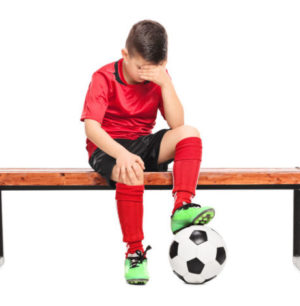 As we’ve discussed on the blog before, it seems like parents are pushing kids to specialize in a single sport at an earlier age. We seem to be forgetting that youth sports are about learning values about teamwork, making friends and staying active. New findings from the American Academy of Pediatrics suggest that this early sport specialization may have some unintended consequences, and they’ve issued some new recommendations for youth sport management.
As we’ve discussed on the blog before, it seems like parents are pushing kids to specialize in a single sport at an earlier age. We seem to be forgetting that youth sports are about learning values about teamwork, making friends and staying active. New findings from the American Academy of Pediatrics suggest that this early sport specialization may have some unintended consequences, and they’ve issued some new recommendations for youth sport management.
Youth Sport Specialization
Before we get to the recommendations, let’s dig deeper into why sport specialization is becoming more popular at an earlier age. According to Dr. Joel Brenner, a former chairperson of the American Academy of Pediatrics Council on Sports Medicine and Fitness, it’s the parents who are pushing children into one sport at a younger age.
“More kids are participating in adult-led organized sports today, and sometimes the goals of the parents and coaches may be different than the young athletes,” said Dr. Brenner.
He added that kids rarely have a strong desire for a college scholarship in a particular sport prior to middle school, and even if they do, both children and parents need to understand that the odds of making it as a professional athlete are extremely rare.
“Some are aiming for college scholarships or a professional athletic career, but those opportunities are rare,” Dr. Brenner said. “Children who play multiple sports, who diversify their play, are more likely to enjoy physical activity throughout their lives and more successful in achieving their athletic goals.”
In fact, research shows that pushing kids into a single sport at an early age can actually have the opposite intended effect. The AAP found that about 70 percent of children who specialize in one sport early in their life drop out of organized sports by the time they are 13.
“One reason could be pressure to perform better and lack of enjoyment due to a variety of reasons, including a lack of playing time,” Dr. Brenner said.
AAP Recommendations
Not only can participating in a variety of youth sports build lasting friendships and teach good health habits, it can actually be good for their muscle groups. Different sports train different muscle groups and skills learned in one sport can help in other sports.
Ultimately, the sport preference is up to the child, but here are the recommendations put forth by the AAP in terms of guiding children towards youth sports.
- Delay single sport specialization until at least age 15-16 to minimize risks of overuse injury.
- Encourage your child to participate in multiple sports.
- If your young athlete has decided to specialize in a single sport, consider setting up an appointment with a pediatrician to discuss the child’s goals to determine whether they are appropriate and realistic.
- Parents are encouraged to monitor the training and coaching environment of “elite” youth sports programs to ensure they aren’t over-stressing or mentally draining on an athlete.
- Encourage a young athlete to take off at least three months during the year, in increments of one month, from their particular sport. They can still remain active in other activities during this time.
- Young athletes should take one to two days off per week to decrease chances of injury.
- The AAP believes kids shouldn’t be athletically “ranked” until at least high school.
Dr. Silverman Comments
The AAP recommendations make sense. It is great to see that common sense and studies can intersect. Although the old adage suggests that it takes 10,000 to master a craft, we need to remember that life is a marathon, not a sprint, and kids shouldn’t have those 10,000 hours in before they can drive a car. Not only is it important from a physical standpoint, but it’s also imperative for your child’s mental health.